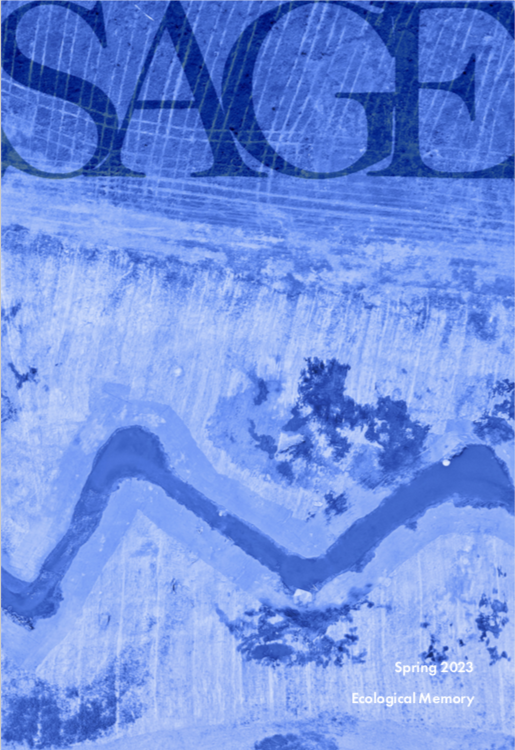Ecological Memory
The loss of memory can be devastating. Last year, SAGE published our first print magazine since 2020. It was a massive undertaking, clouded by uncertainty. The one-year hiatus had halted the transfer of institutional memory. Our team had to rebuild SAGE nearly from scratch. This year, we’ve carried that momentum with us, patchworking together what we know about SAGE’s past with our hopes for the future. We recommitted to working with student designers, to embrace our identity as a student publication. SAGE is back on track. We owe this resilience to our incredible team, and to the many SAGE editors who came before us.
This year, we put out a call for pieces that looked to the past for insight on
the present and inspiration for the future. The pieces in this magazine illustrate the ways memory is found beyond an individual’s recollections.
After all, memory — at both the human and ecosystem scale — is selective. Death and genocide rob us of shared and sacred stories. The geologic record is incomplete.
The cover image of this magazine shows a Pennsylvania stream in a state of partial restoration. Scientific research revealed that a wetland had persisted for thousands of years at the site before it was buried in recent centuries by sediment eroded and deposited through human land use. The image shows a newly-engineered stream channel after this anthropogenic sediment was removed with heavy machinery. This “floodplain restoration” is an attempt to erase what we’ve determined to be harmful to reclaim something valuable that we’ve lost. But change is the only constant in nature. We cannot resurrect the past exactly as it was. Remnant landforms and legacy species will persist and influence the future. Others will be lost — forgotten, in an ecological sense.
In 1992, Judit Padisak defined ecological memory as ‘the capacity of past states or experiences to influence present or future responses of the community.’ This definition can be interpreted many ways, and it has across scientific disciplines. The utility of the concept is what we make of it — much like our relationship to the past.
The contributors to this magazine bring us from backyard rocks to blazing forests. From bird brains to the blood pumping through our veins. These stories explore the decisions, or random happenings, that have created the world we know today.
We must appreciate the ways the past has shaped our present before we can envision a future. Storytelling preserves memory. We hope publishing these stories saves them from evaporating into the passage of time. As you read these pages, allow yourself to reflect, recover, discover something new. Thank you to our editing team, the designers, and above all, the artists and authors who daringly shared your work with the world. For our part as Editors, we won’t forget what it’s meant to us!
Sam Feibel and Shaylyn Austin
SAGE Magazine Co-Editors in Chief
Co-Editors in Chief: Shaylyn Austin & Sam Feibel
Communications Director: Cloe Dickson
Managing Editor:Julia Jacobson
Staff Editors: Anna Lenaker, Claire Nichols, & Molly Ryan
Design: Yikai Qiao, Tian Xu
Cover Photo: Sam Feibel
